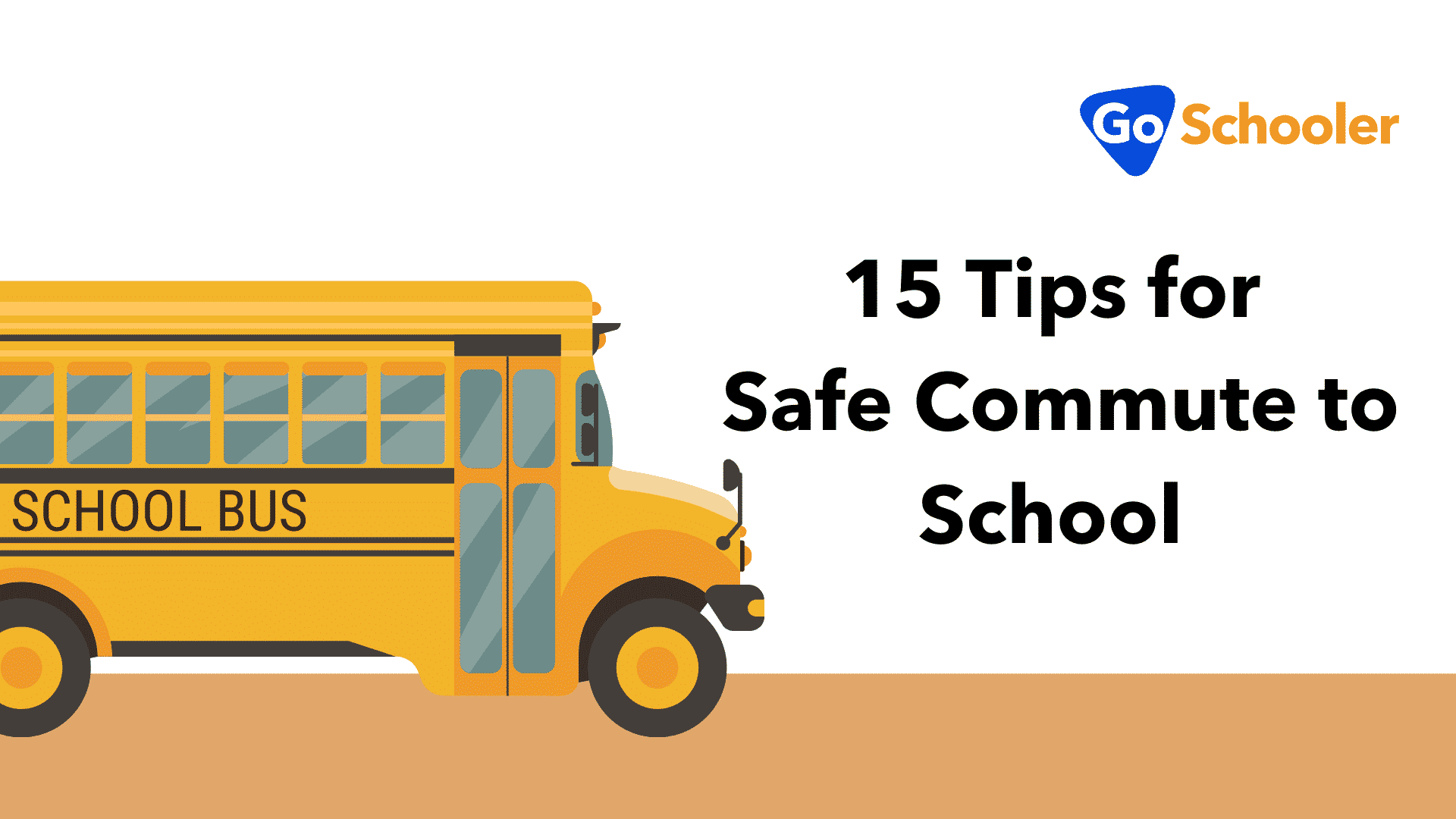Does your child commute to school?
If so, then you know full well how important the safety of your child is.
Safe commuting has always been a significant concern for parents and school administrators over the years.
So, if you want to know some tips on safe commuting to school, then you have come to the right place.
Without further ado, let’s get right into the list.
Tips on How Children Could Safely Commute to School
1. Assess your child
First and foremost, you must assess whether your child already has the basic skills to have a safe commute to school.
Observe whether he could easily spot danger along the way or at least know some basic etiquette for pedestrians.
Try paying attention to his focusing skills, and see if he is prone to distractions or not.
2. Refrain from using gadgets
Speaking of focus, the use of gadgets may divert your child’s attention. Hence, teach him to avoid using them while commuting to school. These may include his mobile phones, headphones, and other devices.
He needs to be aware of his surroundings at all times, so his full and undivided attention is a must.
3. Choose the safest route
If there are multiple paths wherein your child could travel on as he commutes to school, then make sure to select the quickest route.
Look for routes that have few street crossings or intersections with a crossing guard. As much as possible, avoid risky places like train tracks or areas that only have limited people around.
4. Make them memorize your contact details
Whether we like it or not, unforeseen circumstances may happen from time to time. Hence, see to it that your child memorizes your phone number so he could contact you in cases of emergency.
And no. Don’t just record your number on the mobile phone. Let your child memorize it because, whether for safe commuting purposes or not, it could always come in handy.
5. Warn them of possible dangers
Consider warning your child of the possible dangers that he could encounter as they commute to school.
For instance, if worse comes to worst, they may have an encounter with a thief. Tell and teach them some things to take note of to help them handle the situation better.
Moreover, don’t forget to teach one of the fundamental rules that all children know. Teach them not to talk with strangers. Knowing that you are not with them, it’s always better to be safe than sorry.
6. Teach them to be cautious of vehicles
Commuters would agree that crossing the street isn’t necessarily the safest thing to do. Such is especially true when you find yourself in a bustling city full of vehicles zooming here and there.
Safe commute also pertains to the safety measures taken by the pedestrians.
So when watching out for vehicles, constantly remind your kid to “look left, look right, and left again.” If possible, instruct your child to make eye contact with the driver to ensure that the driver has indeed seen them.
7. Find a buddy
As they always say, “Two heads are better than one.” And so is the case with safe commuting!
It would be highly preferable if your child has someone, such as a friend, a neighbour, a classmate, or an adult, whom they can be with as they ride or commute to school. In that way, commuting would not only be safer but enjoyable as well.
8. Familiarize them with the route
Before you send your child alone, allocate some time to walk through the route with him. You can do this multiple times if the way is quite complex to familiarize.
You can also take this opportunity to discuss with him some traffic rules or challenges they may meet as they commute to school.
9. Wear appropriate clothing and gear
While your children may have their uniforms, making them wear brightly coloured clothing will come at an advantage. It makes them easier to be seen during the night or during times when visibility is low.
At the same time, if your child rides a bike to school, make sure they have the proper equipment. Buy a quality helmet and guide them in reviewing bike safety rules regularly.
10. Coordinate with concerned authorities
Most of the time, ensuring the safety of your child entails the help of other people. So don’t hesitate to coordinate with your child’s school with regards to implementing safe school zones.
If possible, crossing guards must also be present at the intersections where your child crosses regularly.
11. Orient them with seasonal hazards
Different seasons may bring varying risks. For instance, when snow covers the ground, remind your child to stay away from snow-clearing vehicles.
During rainy days, remind them to be extra careful as roads tend to be more slippery.
Furthermore, don’t forget to let them bring essentials like a cap, umbrella, or sunscreen lotion during hot days. Drinking lots of water to keep your child hydrated would be helpful too!
12. Wait until the vehicle stops
If your child rides a school bus, then remind them to be careful with moving vehicles. Let them wait until the bus comes to a complete stop before standing to avoid any injuries.
In the same manner, tell them to follow the same practice when boarding the bus. A good rule of thumb is to keep at least five steps away from the road and to enter only when the bus halts completely.
13. Lighten up their load
Be sure that the things your child brings are manageable. A heavy backpack, for instance, may overwhelm them and affect their movements.
Bringing heavy things will not only strain his back but make him lose his balance as well. Consequently, this load may give your child a hard time commuting to school.
14. Follow traffic signals and signs
This tip should go without saying, but familiarizing your child with some traffic signals and signs would be indubitably helpful.
You may teach them what each colour of the traffic light represents. You can start by telling what the purpose of the pedestrian lane is!
15. Ask them for problems
After all, there may be problems you cannot foresee, so ask your child regularly and check what difficulties he encounters as he commutes to school.
Afterwards, you can now effectively evaluate his concerns and address them accordingly.
Safe commuting with New Technology
Commuting to school is already quite challenging in and of itself. However, the present times may have even made it more arduous. Traffic jams are more frustrating than it ever was, and poses an even greater risk for students.
Schools and parents are meeting eye-to-eye in devising safety methods for the children’s commute to and from school. This is where school transport management systems are borne out. All-in-one school management software, such as GoSchooler, also offers this tracking system among all its services.
A bonus tip for a safe commute to school is to choose a school that uses a school bus tracking system that provides timely updates for the parents and school administrators. GoSchooler provides these updates and tracking.
Both parties receive timely updates regarding the bus’ location. Parents receive notifications that approximate the distance of the bus from the student’s nearest bus stop.
In this way, both parents and students can estimate what time they should leave their home to head to the stop. Parents receive the same notification when their children get on the bus when they are bound to go home.
At the same time, school administrators can also use the GoSchooler software to track the route and location of the bus in real-time.
Just look at the efficiency that comes with using a single school management software.
FAQs
Can students commute to school?
Are students who commute to school at a disadvantage?
Does commuting to school affect grades?
Conclusion
All in all, safe commuting is indeed nothing short of essential. So by following these tips, you could rest in the assurance that your child could commute to school as safe as he could be.
How about you? Do you have some other tips in mind? Tell us more in the comments below.
As they always say, sharing is caring!






